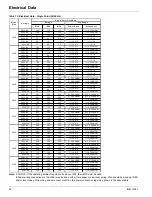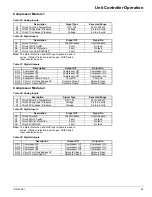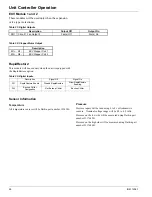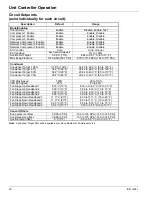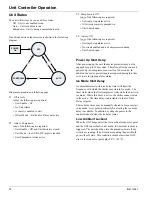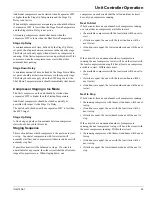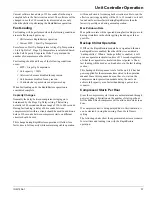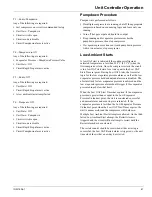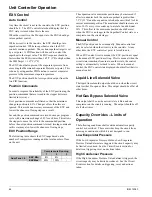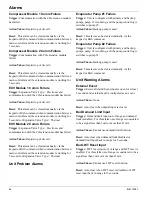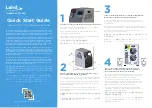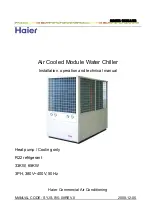
IOM 1206-1
35
Unit Controller Operation
Additional compressors can be started when Evaporator LWT
is higher than the Stage Up Temperature and the Stage Up
Delay is not active.
When multiple compressors are running, one should shut down
if evaporator LWT is lower than the Stage Down Temperature
and the Stage Down Delay is not active.
All running compressors should shut down when the
evaporator LWT is lower than the Shut Down Temperature.
Stage Up Delay
A minimum amount of time, defined by the Stage Up Delay
set point, should pass between increases in the capacity stage.
This delay should only apply when at least one compressor is
running. If the first compressor starts and quickly shuts off for
some reason, another compressor may start without this
minimum time passing.
Stage Down Delay
A minimum amount of time, defined by the Stage Down Delay
set point, should pass between decreases in the capacity stage.
This delay should not apply when the LWT drops below the
Shut Down Temperature (unit should immediately shut down).
Compressor Staging in Ice Mode
The first compressor on the unit should be started when
evaporator LWT is higher than the Startup Temperature.
Additional compressors should be started as quickly as
possible with respect to the Stage Up Delay.
The unit should shut down when evaporator LWT is less than
the LWT target.
Stage Up Delay
A fixed stage up delay of one minute between compressor
starts should be used in this mode.
Staging Sequence
This section defines which compressor is the next one to start
or stop. In general, compressors with fewer starts will
normally start first, and compressors with more run hours will
normally stop first.
If possible circuits will be balanced in stage. If a circuit is
unavailable for any reason, the other circuit shall be allowed to
stage all compressors on. When staging down, one
compressor on each circuit shall be left on until each circuit
has only one compressor running.
Next To Start
If both circuits have an equal number of compressors running
or a circuit has no compressors available to start:
•
the available compressor with the least starts will be next to
start
•
if starts are equal, the one with the least run hours will be
next to start
•
if run hours are equal, the lowest numbered one will be next
to start
If the circuits have an unequal number of compressors
running, the next compressor to start will be on the circuit with
the least compressors running if it has at least one compressor
available to start. Within that circuit:
•
the available compressor with the least starts will be next to
start
•
if starts are equal, the one with the least run hours will be
next to start
•
if run hours are equal, the lowest numbered one will be next
to start
Next to Stop
If both circuits have an equal number of compressors running:
•
the running compressor with the most run hours will be next
to stop
•
if run hours are equal, the one with the least starts will be
next to stop
•
if starts are equal, the lowest numbered one will be next to
stop
If the circuits have an unequal number of compressors
running, the next compressor to stop will be on the circuit with
the most compressors running. Within that circuit:
•
the running compressor with the most run hours will be next
to stop
•
if run hours are equal, the one with the least starts will be
next to stop
•
if starts are equal, the lowest numbered one will be next to
stop


